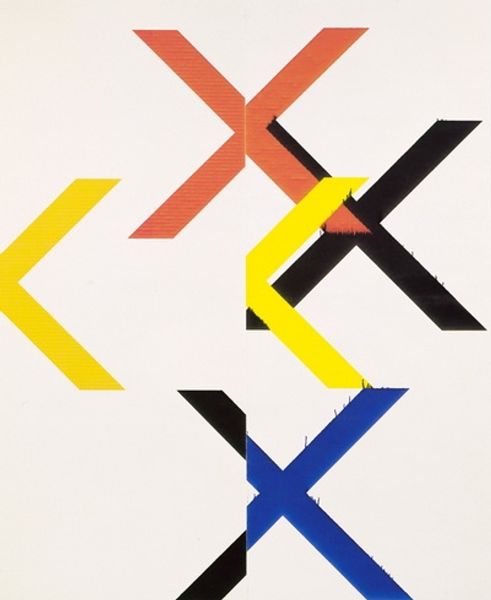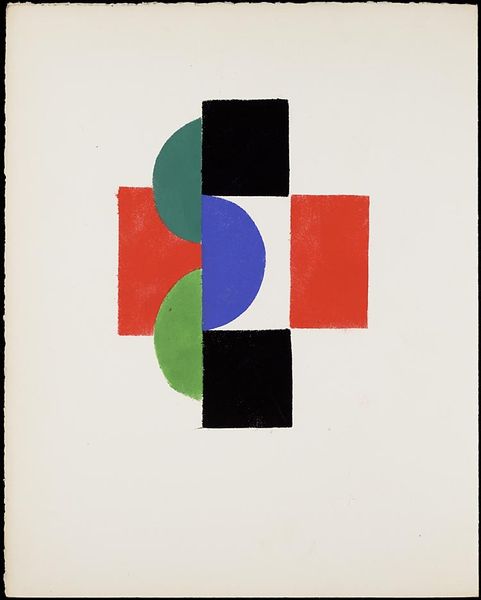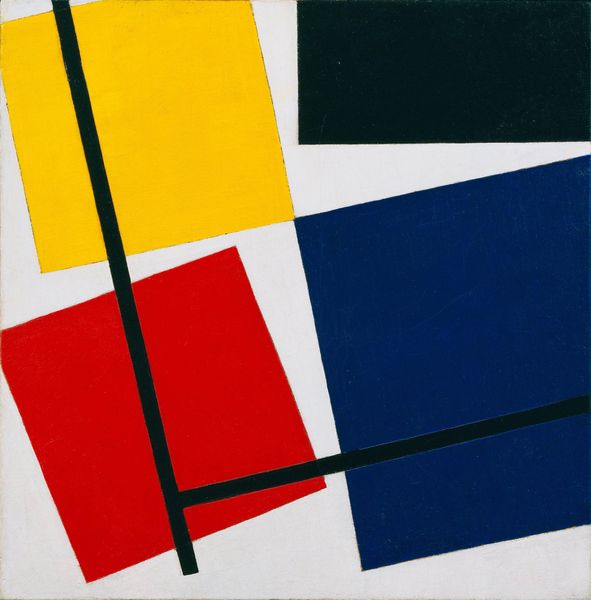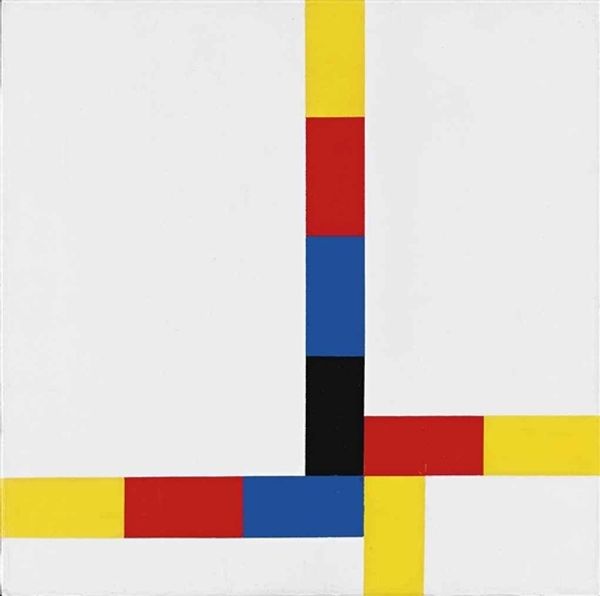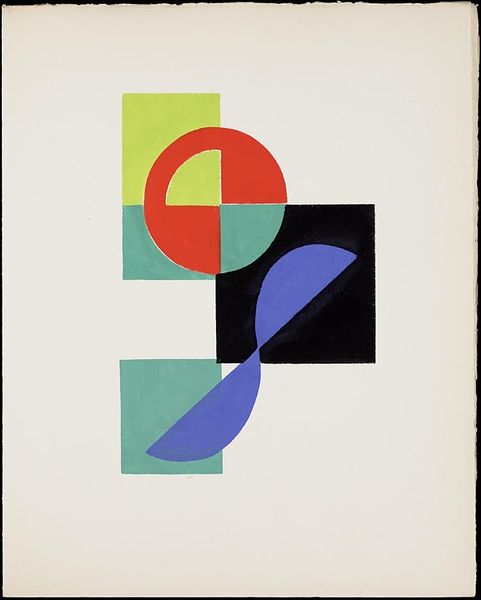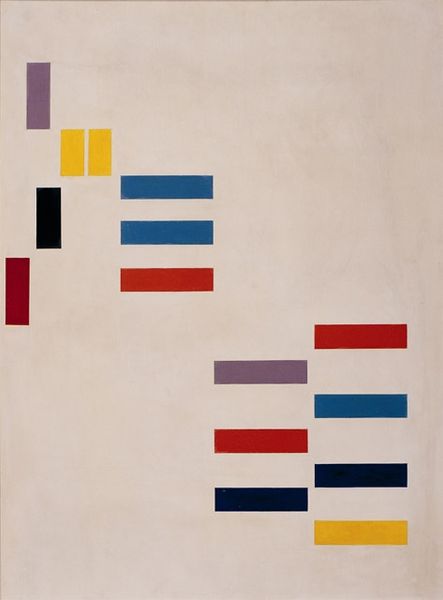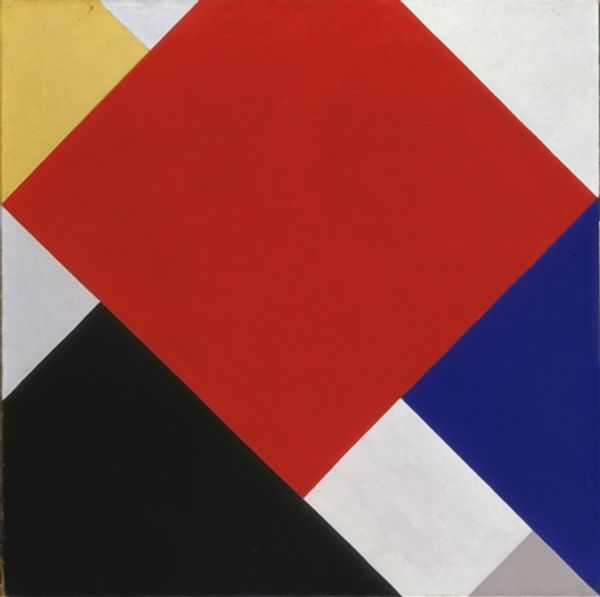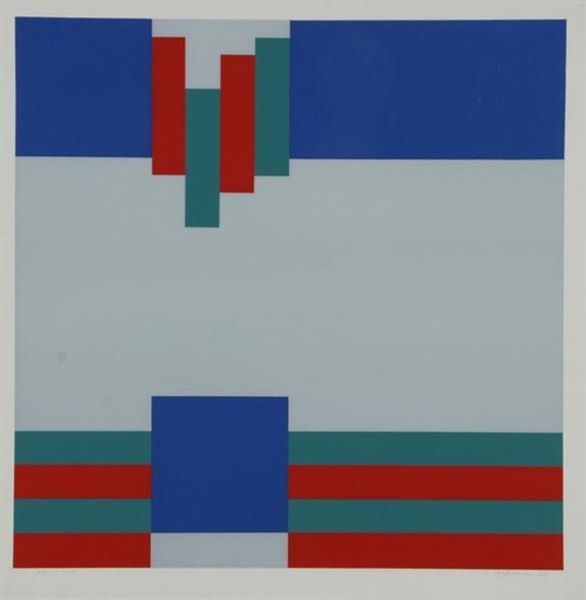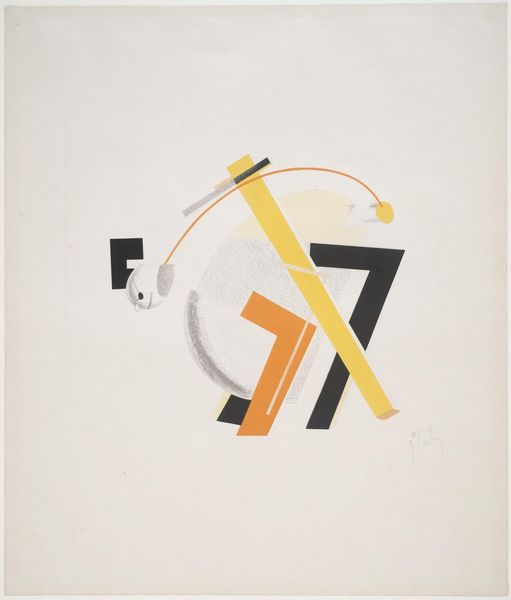
acrylic-paint
#
concrete-art
#
pop art
#
constructivism
#
acrylic-paint
#
form
#
rectangle
#
geometric
#
white focal point
#
abstraction
#
line
#
modernism
#
hard-edge-painting
Copyright: Verena Loewensberg,Fair Use
Editor: This is an untitled piece by Verena Loewensberg from 1980. It’s an acrylic painting with these bold, geometric shapes... Rectangles in red, blue, green, yellow and black floating on a white background. It’s strikingly simple, almost playful. What stands out to you about it? Curator: It’s interesting to consider this within a materialist framework. What were the conditions of its production? Loewensberg's choice of acrylic, for example. In 1980, it was no longer the new, revolutionary material, yet it still held a different connotation than oil – a symbol of mass production and industry impacting art. How does that affect our understanding of her artistic intention? Editor: So, the use of acrylic moves it away from traditional "fine art" associations? Curator: Precisely. The use of manufactured materials, the smooth, unmodulated surfaces achieved with acrylic – these deny the expressive touch so valued in earlier painting. Think about the social context too: Concrete art emerged post-World War II, driven partly by socialist and utopian ideas. Where does this piece fit in the history of abstraction and this moment? Was she still considering socialist themes at this point? Editor: That’s fascinating, I hadn’t considered the potential social or political aspects! I just saw the pretty colors and shapes. Curator: And there lies another question – are those choices of color a material consideration, a question of availability? Or are those particular choices, and arrangement, saying something about social ideas? Did her colour choices challenge conventions and assumptions around industrial practices? Editor: It gives me so much to think about. Thank you! Curator: It's crucial to move beyond the purely formal qualities. Consider the material conditions of artistic creation – where the artwork comes from, what it’s made of, and what those things might mean.
Comments
No comments
Be the first to comment and join the conversation on the ultimate creative platform.

